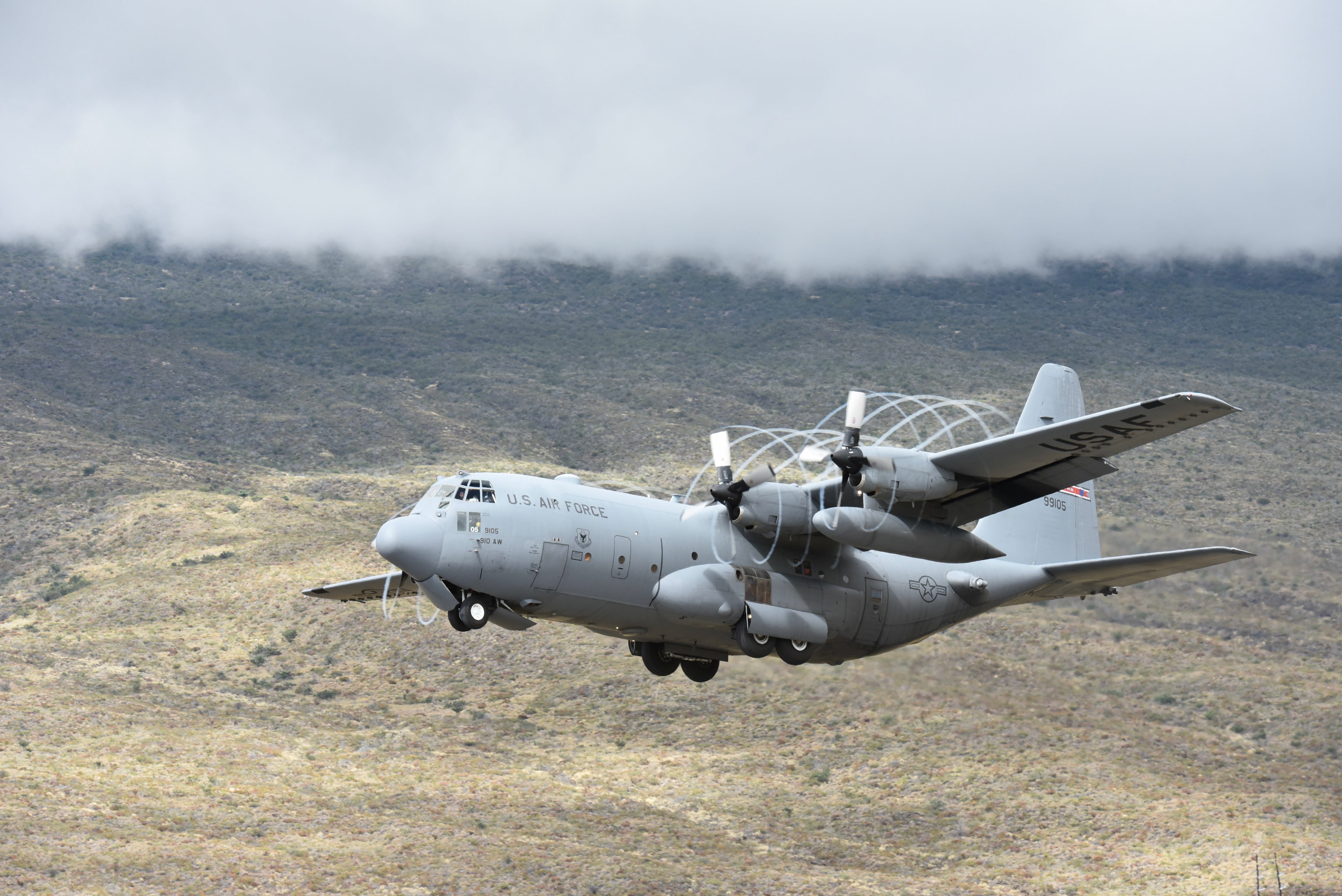WASHINGTON — The days of analog cockpit gauges, clunky navigation systems and pilots lugging around laptops are numbered for the Air Force Reserve and Air National Guard’s C-130H Hercules transport aircraft.
The U.S. Air Force is transitioning most of its aging Guard and Reserve C-130Hs to a new, almost-entirely-digital avionics and navigation system that it hopes will dramatically simplify how aircrews fly them, the service said Tuesday.
The new system, dubbed Avionics Modernization Program Increment 2, will update the C-130′s cockpit with six interconnected digital displays. These large glass multifunctional displays will replace all but three of the old analog gauges, which date back to the C-130′s nearly 60-year-old original design, and bring the older C-130Hs in line with the newer C-130J’s capabilities.
“This is much larger than just a software or hardware upgrade,” said Maj. Jacob Duede, an experimental test pilot for the 417th Flight Test Squadron at Eglin Air Force Base. “It’s reconstructing and modernizing the aircraft’s entire cockpit area.”
The Air Force has about 118 C-130Hs total in its Guard and Reserve fleets, most of which are more than 30 years old. The service is replacing them with newer C-130Js, which active duty mobility units fly, but amid that yearslong effort, the service needs to upgrade its C-130Hs to keep them up to date.
The Air Force said the cockpits of more than 23 Reserve and 54 Guard C-130s will receive upgrades over the next five years, with each modification costing about $7 million.
The 417th Flight Test Squadron, part of the 96th Test Wing, began developmental testing of the new avionics system on the first C-130H to receive the upgrade in August, the service said. More Hercules will start receiving upgrades this month.
Developmental testing, which began in 2021, will continue at Eglin Air Force Base through December. The aircraft will then move to Little Rock, Arkansas, for the Air National Guard Air Force Reserve Command Test Center to start operational testing.
The cockpit upgrade also brings with it a new flight management system, autopilot, an updated global positioning system, a digital engine instrument, and a terrain and warning system, the Air Force said.

It will spell the end of a painfully cumbersome navigation process Guard and Reserve C-130 pilots have operated under for years, Duede said — one that required aircrews to bring tablets or laptops onboard to pull up the necessary navigational software.
“Aircrew essentially had to print the directions before flying and then type the information in using latitude and longitude, or use ground-based navigation aids,” Duede said. “This new mod is the newest GPS navigation with a by-name search function and autopilot, all built into the aircraft.”
The new system will also make it easier for aircrews to modify their flight plans midair, the service said. Under the old system, pilots had to coordinate with air traffic control to change their flight plan and then look up the new latitude and longitude on a tablet or laptop. The pilots would then enter those coordinates into the aircraft’s system. This could take anywhere from 30 seconds to 3 minutes, depending on the proficiency of the crew, Duede said — “either of which is a long time when in the air moving at 4 miles per minute.”
The Air Force said the new displays, with their built-in navigational software, would allow the pilot to change the flight plan by hand in less than 30 seconds.
The new integrated terrain awareness and warning system is a version of the ground- and object-avoidance program used in commercial aircraft, but upgraded with Air Force tactical flying requirements. To test that warning system, the service said, aircrews sometimes fly toward the ground or at obstacles to ensure it works as quickly and clearly as intended.
The aircrew study all parts of the new avionics system during developmental flight tests so the service can tell the manufacturer if anything needs changed.
“This is an entirely new system,” Caleb Reeves, a test engineer with the 417th Flight Test Squadron, said in the service announcement. “Everything we’re testing here is being done for the first time ever in this aircraft.”
Stephen Losey is the air warfare reporter for Defense News. He previously covered leadership and personnel issues at Air Force Times, and the Pentagon, special operations and air warfare at Military.com. He has traveled to the Middle East to cover U.S. Air Force operations.





